Syn.: Tillandsia langlassei Poiss. et Menet
Family: Bromeliaceae Juss.
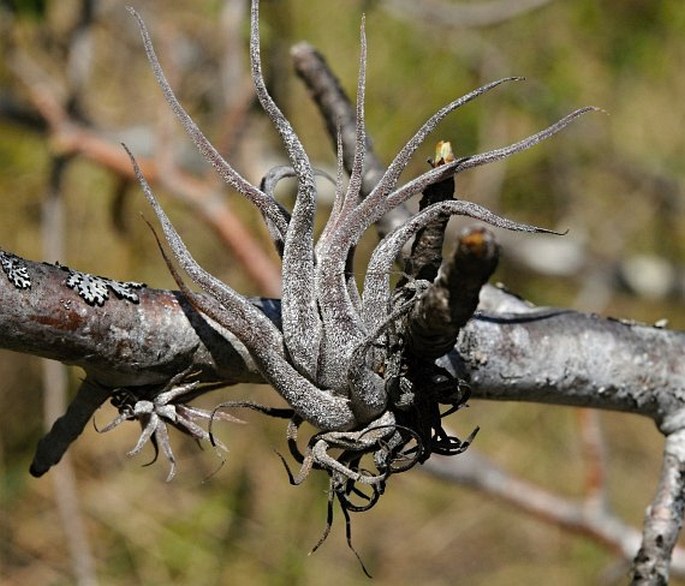
Distribution: Central American species, from Panama as far north as southern Sonora, Mexico.
Ecology: Epiphyte, attached to limbs of mainly deciduous trees from coast to about 1600 m of elevation. Flowering usually after a dry period. Found sympatric with Tillansia pruinosa, T. circinnata and T. seleriana.
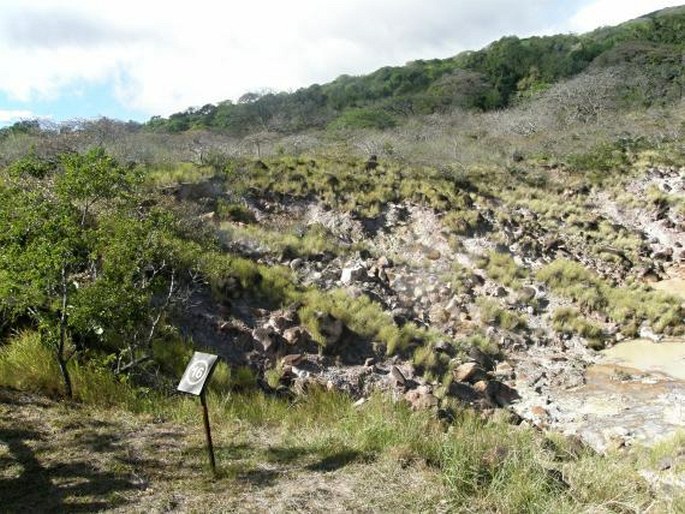
Description: Epiphytic bromeliad, monocarpic, 20–32 cm tall, with minimal roots functioning only as the means of attachment to the substrate, however, it can be found growing upright, hanging or horizontally. Leaves in a rosette form a bulbous base and extend as twisted, 18–30 cm long, channeled and narrowing to a point. Leaves are densely covered with moisture retaining trichomes, silvery grey to rusty grey. The scape extends from the twisted leaves some 5–8.5 cm. It is distichous and can be either single spike or many branched. Bracts on peduncle and supporting flowers, about 2 cm long, oval-lanceolate, pink to reddish to purplish, bare or with minute trichomes; flowers tubular, 3–4 cm long; 3 pink sepals, half length of 3 blue to violet petals; stamens exserted, blue to violet filaments, yellow anthers; white, further exserted white style with 3-headed stigma. Fruit is a capsule about 5 cm long; seeds with fluffy pappus.
Note: One of truly atmospheric Tillandsias and as it uses its roots for attachment only, all water and nourishment is regulated through trichomes covered body. It is monocarpic as all bromeliads and after flowering it produces an offset (pup) or more of them and dies.
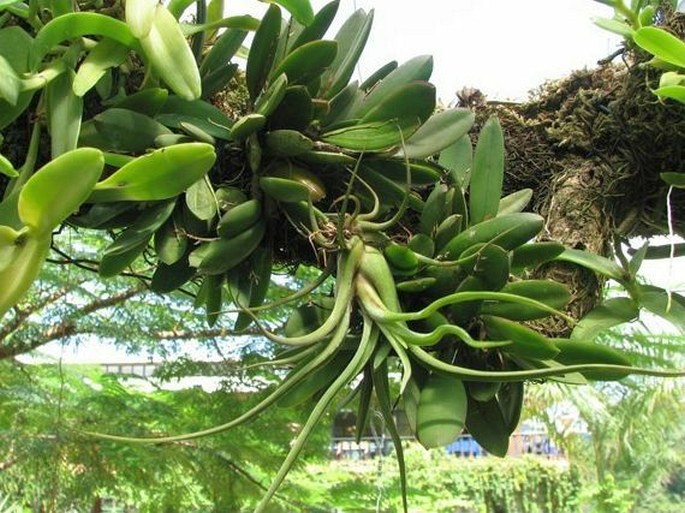
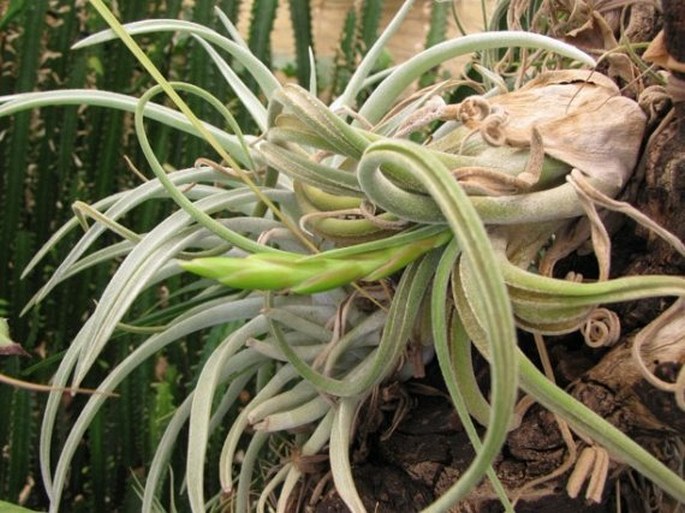
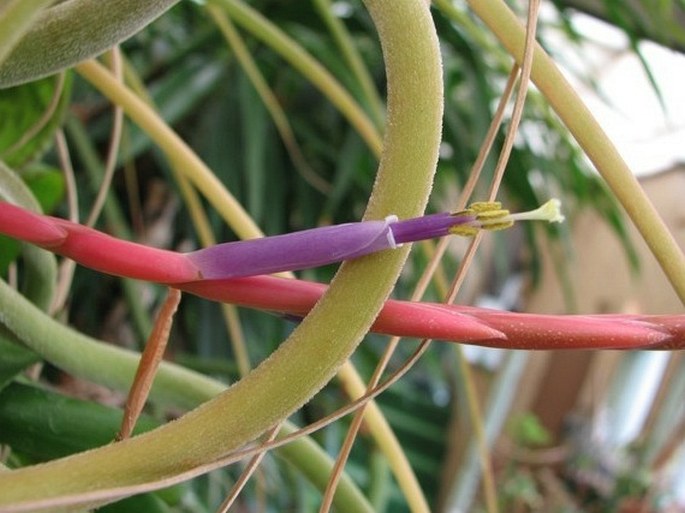
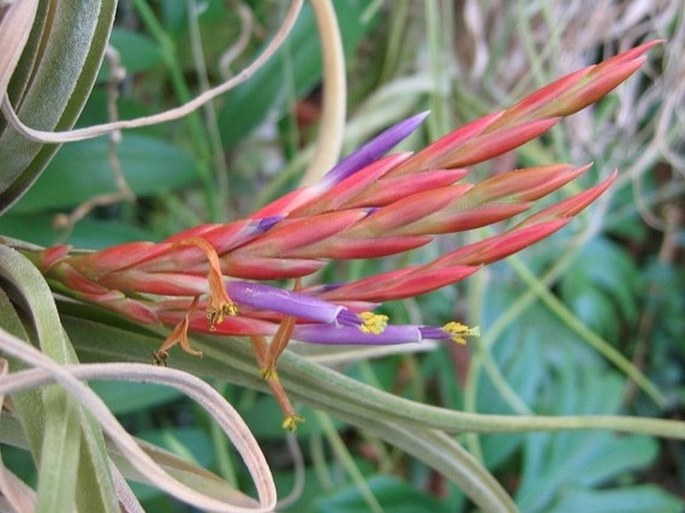
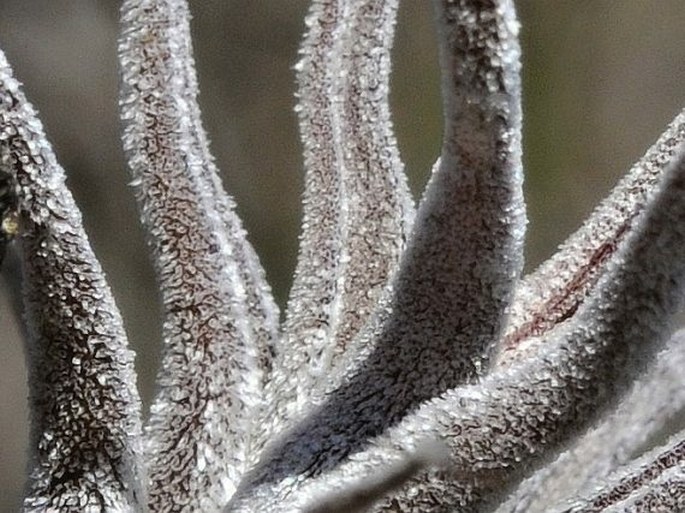
These images were taken in Mexico, Jalisco, Puerto Vallarta vicinity (by Karel Bergmann, October 2008), and Costa Rica, Rincón de la Vieja NP, Las Pailás (by Alena Vydrová and Vít Grulich, February 24, 2009).


